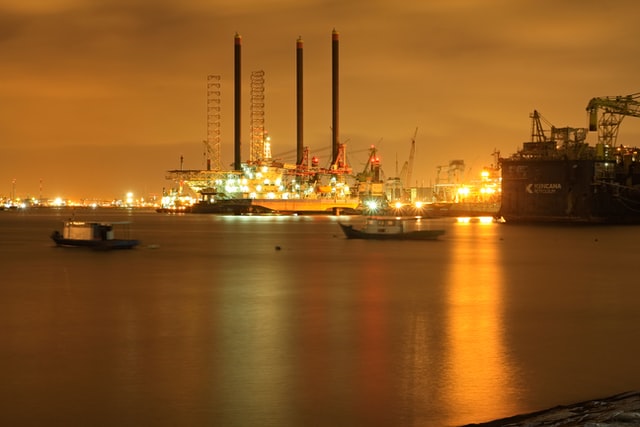A Triple Play In Energy

Photo by Timothy Newman on Unsplash
I recently reviewed the earnings reports for the energy companies held in my model portfolio. Here's a look at three top-rated ideas — a Canadian firm, a U.S. midstream player, and a leading refiner.
If the pandemic-filled year of 2020 proved anything for the midstream energy sector, it would be that size more often than not equals strength and sustainability. And the positive business momentum at Enbridge Inc (ENB) has continued this year, most recently with a 19.6% lift in Q2 earnings per share.
Distributable cash flow per share advanced 2.5% from a year ago, and management has affirmed full year DCF guidance of CAD4.70 to CAD5 per share, along with projected 5-7% annual cash flow and dividend growth.
Enbridge’s “secret formula” is unmatched operational and geographic diversification in North America. The high profile Line 3 oil pipeline expansion is at last nearing the finish line to produce a big cash flow lift this winter. And the Line 5 tunnel project appears likely to be upheld by federal courts in the face of opposition by Michigan’s governor.
But in the unlikely event that neither project succeeds, the company would still have billions of dollars of new projects across the energy spectrum to fuel growth. That includes $1.5 billion of natural gas pipeline expansion nearing full startup in Q4, as well as a stake in 1.4 gigawatts of French offshore wind capacity under development that management says is “progressing well.”
With liquids pipelines seeing a solid activity recovery this summer, Q3 results should also be robust. I would say to buy the giant Canada-based midstream company’s NYSE-listed ADRs below $42.
Enterprise Products Partners (EPD) — America’s premier energy midstream company — isn’t getting much respect these days, trading with a yield north of 8%. But we continue to regard that as an opportunity for patient investors to lock in high and steadily growing income in a stock we believe will trade well north of its old high of $40 plus later this cycle.
Q2 distributable cash flow came in at a solid 1.6 times coverage ratio. Free cash flow for the trailing 12 months ended June 30 increased by 55.6% after all CAPEX, covering the payout by 1.07 times and leaving ample cash for buybacks and debt repayment.
Breaking down the operations, Liquids pipelines volumes grew by 3.2%, natural gas pipelines throughput rose by 9.2%, propylene plant production surged by 56.9%, and equity NGL production was higher by 5.3%. That was partly offset by reduced marine volumes.
Liquids volumes remained -4% below 2019 (pre-pandemic) levels. But management affirmed the company’s modest construction program is on time and budgeted, with next new assets entering service and generating cash flow starting in Q4.
The big picture is the positive impact of Enterprises’s new assets — especially expansion of ethylene and propylene systems — is more than offsetting weakness elsewhere, including some recontracting activities. And it’s set to continue doing so, even as management focuses on researching and identifying areas “complementary to existing competencies,” such as carbon capture, hydrogen, and renewable fuels.
Net debt to EBITDA is already quite low at 3.4 times. But management says it will continue to prioritize liquidity, citing uncertain oil and gas regulation as one reason. That’s likely to restrain dividend growth the next few years. But the company is in prime position to ramp up as the energy cycle turns higher. Our highest recommended entry point for Enterprise remains $33.
Refining giant Valero Energy (VLO) generated $2.0 billion in operating cash flow for Q2 2021 or $809 million if we exclude a $1.1 billion favorable impact from working capital and $132 million associated with its renewable diesel joint venture.
Regardless, that was more than sufficient to cover VLO’s $401 million in quarterly dividend payments. Indeed, that pretty much in-line with management’s long-term plan to pay out 40% to 50% of adjusted cash from operations as dividends.
This represents a far cry from the year-ago period when plenty of pundits were predicting VLO would be forced to cut its dividend amid the historic collapse in energy demand. We’ve retained the view the company would maintain its payout through the downcycle and, with the worst of the downturn firmly in the rear-view mirror, that looks even more likely.
We see VLO as a play on two basic themes. First and most important, refiners like Valero are a pure play on the demand side of the energy cycle since these companies are in the business of converting raw oil into usable refined products like gasoline and diesel fuel.
In our view, US energy demand is already recovering, and that trend should continue through 2022 as well. While there’s no doubt the surging Delta variant has prompted some concerns about demand, weekly inventory stats suggest any impact is minor.
Indeed, in eight of the past 10 weeks, US refined product demand – including gasoline and diesel – has been above the five-year seasonal average. In short, coronavirus concerns have prompted consumers to cut back on spending in some areas such as air travel; summer road travel has remained strong.
The ongoing demand recovery should drive higher refining margins over the coming year, which is the key to upside for refiners like Valero. Second, we like VLO’s early mover status in the renewable diesel market and we see this as an attractive and unique longer-term growth opportunity for VLO. The stock is a buy under $85.
Disclaimer: © 2021 MoneyShow.com, LLC. All Rights Reserved.



